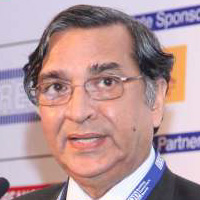 Connect with us
Connect with us

 Dec 02, 2022
Dec 02, 2022
This year in November 2022, at meeting in the city of Sharm El-Sheikh in Egypt, leaders and their organisations and private sector companies demonstrated an eagerness to move beyond goals and commitments to action and impact, despite current challenges. The general discussion on the outcome has been subjected to intense debate whether sufficient achievements have been made or not. However, leaders from the private sector showed up with the determination and mindset of “Let's get it done”, even if precise measurements and outcomes are not yet exactly clear. The however, reminded of over 500 international companies having been signed and pledged with the UNFCCC, to attain Net-Zero by 2040. Last year, after COP 26 in Glasgow, experts outlined nine requirements for a more orderly transition, which highlight the complexities, challenges, and opportunities in solving the net-zero equation. The transition was never expected to be easy and recent headwinds such as surging inflation, rising energy costs, and an ongoing war in Europe, have brought greater challenges in the path to 'Net-Zero'.
In recent years, five factors have created an economic storm. Solutions to all these need a global understanding and collaborative solutions, even the effects are felt locally. The first was the emergence of China as a strategic threat, resulting in sanctions, high tariffs and disruption of global value chains, and going as far as countries cutting ties with China. The second was Covid, which devastated all economies. The third was the Ukraine war. The fourth was high inflation, which preceded the war but was exacerbated by it. The fifth was soaring interest rates across the world, as Central Banks sought to fight inflation.
In the context of a turbulent macroeconomic environment and fractious government negotiations, it is clear that the transition has to deliver not just net-zero emissions, but also energy security, resilience and affordability.
In the context of a turbulent macroeconomic environment and fractious government negotiations, it is clear that the transition has to deliver not just net-zero emissions, but also energy security, resilience and affordability. It is less obvious that some 0 of the critical targets that deliver a 1.5 c temperature outcome will be reached, which makes focus on adaptation even more crucial. But whether we are focused on carbon reduction, removal or adaption, the time to act in now.
Key points of “Sharm EI Sheikh Adaptation Agenda” include:
(i.) It proposes 30 Adaptation Outcomes to improve resilience for 4 billion people living in the most climate variable countries by 2030. The effort was to raise USD 140 billion – USD 300 billion to achieve goals aimed at reducing severe effects of climate change.
(ii.) On behalf of like minded developing countries (LMDCs), India noted that the USD 100 billion per year pledged in 2009, is only small and is yet to be fulfilled. Having failed to raise USD 100 billion by 2020, developed countries have now promised to deliver on this promise by 2023.
(iii.) India and China are now on track to overachieve climate targets by 2030. They account for 2.7 billion people, about 20% of the world GDP, and nearly a third of global emissions (China 24.23% and India 6.76%).
(iv.) Parties agreed to introduce 'loss & damage funding' as an agenda item. The European Union agreed to this as a financial option for the most vulnerable countries.
(v.) A side event of the International Conference on 'Citizencentric' energy transition: Empowering Citizens with 'Mission LiFE' (Lifestyle for Environment) was also organised at the Indian Pavilion to showcase the Hon'ble Indian PM's vision.
(vi.) The International Solar Alliance announced the roadmap, 'Our Solar Future: Roadmap' to mobilize US $1 trillion by 2030. The goal of the roadmap is to secure the funding needed to scale up the deployment of solar power projects.
(vii.) “Executive Action Plan” for 'Early Warnings for All' was launched by WMO (World Meteorological Organization). It is a 5 year strategy to develop a global early warning system for expensive and dangerous, extreme weather events that are aggregated by climate change. Estimate for providing early warning system to all by 2027 will be around USD 3.1 billion, which is equal to about US 50 cents per person each year.
(viii.) India also announced launch of the 'Mangrove Alliance for Climate'. This is a joint initiative by UAE and Indonesia, and India is one of the early entrants.
(ix.) India also submitted its 'Long term Low Emission Development Strategy' (LT LEDS).
(x.) Carbon budgets were also in focus for containing 0 temperature rise to below 1.5 c. Carbon budget is the maximum amount of carbon dioxide that can be produced 0 while still keeping global warming within 1.5 c compounded to pre-industrial levels.
McKinsey and Company carried out elaborate conversation with hundreds of executives and government officials. They identified 'Key Takeaways' to accelerate the transition and preserve security and affordability. These reflect a general concern, and highlight role of the private sector, also of whom 500 major MNCs have signed a pledge with UNFCCC to attain Net-Zero.
Some relevant outcomes are as follows:
(1.) The role of the Private Sector; From Commitment to Action
Like in COP 26 in Glasgow, in 2021, the private sector appeared more convinced to turn their commitment into action, despite different economic and geographic realities. Results of pilot projects were shared, where companies across product value chains successfully exchanged standardized product level emissions data, to address Scope 3 emissions. Such tools and cross business collaboration allows companies to accelerate decarbonisation at scale.
(2.) The power of “and”: Shaping strategies that square resilience and net zero commitments
The balance between energy security and emissions reduction have never been more difficult. The best response for the current moment is making the choice for “and”, not “or” – that is, maintaining focus as the long term, while adjusting in the face of present conditions, rather than opting for one or the other.
(3.) The opportunity lies in playing 'Offense': A strategy for the public and private sector
Accelerating capital deployment will also require innovative policy decisions and incentives from government.
(4.) The spark of innovation: Advancing new climate technologies
The new low emissions asset class that is forming can have attractive returns if investors provide support beyond money, lending their expertise and guidance as well.
(5.) The biggest capital allocation of our lifetime for companies and nations An analysis shows that the cumulative capital spending on physical assets for net zero transition - Such as technology, infrastructure and natural resources would increase by USD 3.5 trillion through 2050.
(6.) The promise of Nature based solutions: Improving biodiversity and lowering emissions
Natural climate based solutions could provide upto one - 0 third of the emissions reduction needed to achieve 1.5 pathway, at a lower cost than other methods of emissions abatement, while also stemming the loss of nature.
7. The ecosystem mindset: Collaborating to move faster and achieve more
Cities are taking control of their destiny and leading energy transition by strengthening end to end ecosystems.
Leaders are looking forward towards COP 28, in UAE in 2023. Everyone is expecting to see a continual shift from “commitments” to “actions”, as organizations make progress on balancing net zero targets with long term energy resilience, ensuring a secure, affordable, and clean transition. We anticipate more commitment from all corporates, countries and coalitions, grounding in the power of the “and”: creating energy resilience and accelerating the net zero transitions.
Corporate Boards have to play a key role, IOD will be organising a Global Convention on Innovation and Business Excellence, in March 2023, in Dubai (UAE). That will be an opportunity to assess how the corporate world has moved in action on Net Zero. IOD is quite hopeful that positive pathways will open up from deliberation and meetings at our Convention that will give inputs to COP 28.

He is the Vice President of the Institute of Directors. He is also an Advisor to the UN's FAO and former Chairman, The Institution of Engineers (India). He has been involved with Environment and Energy Policy, as well as in planning and implementation of energy projects under the UN Agencies for over three decades in India, and other Asian and Pacific countries.
Owned by: Institute of Directors, India
Disclaimer: The opinions expressed in the articles/ stories are the personal opinions of the author. IOD/ Editor is not responsible for the accuracy, completeness, suitability, or validity of any information in those articles. The information, facts or opinions expressed in the articles/ speeches do not reflect the views of IOD/ Editor and IOD/ Editor does not assume any responsibility or liability for the same.
About Publisher

Bringing a Silent Revolution through the Boardroom
Institute of Directors (IOD) is an apex national association of Corporate Directors under the India's 'Societies Registration Act XXI of 1860'. Currently it is associated with over 30,000 senior executives from Govt, PSU and Private organizations of India and abroad.
View All BlogsMasterclass for Directors
Categories